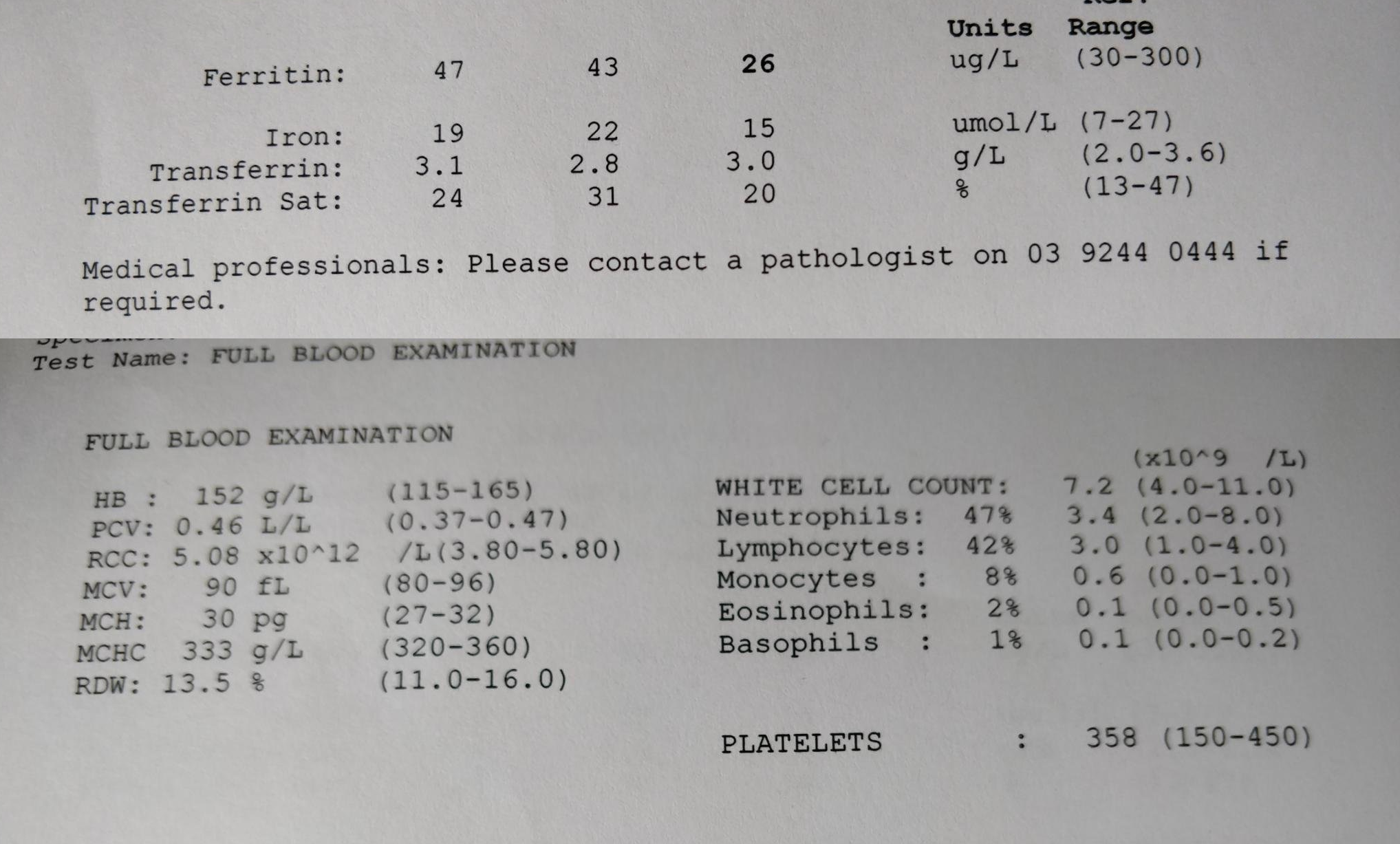Do you ever get confused as what the difference is between Iron Deficiency and Iron Deficiency anaemia? Often the two names are used interchangeably. But really, they each stand for two different conditions. Yes, they are related. Iron deficiency can lead to Iron Deficiency Anaemia. But there are distinct differences in test results findings and patient presentation.
So I want to share with you an example that helps to clarify the difference between the two. Below, you’ll see test results of Iron Studies and Full Blood Examination Testing.
Iron Studies & Full Blood Examination Results

These results are an example of when a patient has iron deficiency that has not yet turned into iron deficiency anaemia. If you look at the results you can see that the Ferritin is low but all other markers including Transferrin Saturation are normal. This is a good sign that deficiency is in the early stages.
A patient with severe iron deficiency would usually present with depleted levels of Ferritin, Serum Iron and Transferrin saturation. When there are low levels of all three of these markers, that indicates that the body is fresh out of iron. There is no iron in savings (ferritin), there’s no iron in the till (serum iron) and there is no iron available with any of the delivery boys (transferrin saturation) who are moving it around the body (I like using a delivery restaurant analogy here with iron representing money). Iron Deficiency Anaemia would be occurring or imminent for a patient who presents with those kind of results.
However, your patient may have very little iron but still appear to have healthy red blood cells (RBC). That is the difference between iron deficiency and iron deficiency anaemia. Anaemia means that there is red blood cell production impairment.
In the example I have given here, the conclusive determination that this patient is not yet anaemic is because their haemoglobin (HB) in their Full Blood Examination (FBE) is not yet effected. Iron deficiency becomes “Iron deficiency anaemia” once we start to to see haemaglobin levels (along with other biomarkers in the FBE) decrease.
So once the lack of iron begins to impair production of red blood cells, that is when it is called iron deficiency anaemia. Because the lack of iron means that the amount of haemoglobin that is produced is impaired. The size of the erythrocytes (red blood cells) are also impaired and we can determine RBC size by looking at the Mean Corpuscular Volume (MCV) and the Red Cell Distribution Width (RDW). Iron deficiency anaemia usually means that RBC get smaller.
So impairment of RBC is the difference between iron deficiency and iron deficiency anaemia. That is why it is particularly useful to have both the Full Blood Examination and Iron Studies testing done at the same time.
